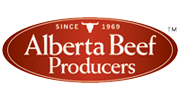Trying to Prevent Mycoplasma
| Project Code: | 0007-106 |
| Completed: | December 2010 |
Project Title:
Use of antimicrobial peptides as adjuvants for vaccines against Mycoplasma bovis
Researchers:
Dr. Jose Perez-Casal jose.perez-casal@usask.ca
Jose Perez-Casal, PhD, Volker Gerdts, PhD (Vaccine and Infection Disease Organization, University of Saskatchewan)
- Invasion of Bovine Peripheral Blood Mononuclear Cells and Erythrocytes by Mycoplasma bovis
- rotein chimeras containing the Mycoplasma bovis GAPDH protein and bovine host-defence peptides retain the properties of the individual components
Mycoplasma bovis has become a significant bacterial pathogen in commercial feedlots over the past decade or so. Since Mycoplasma bacteria lack a cell wall, antibiotics (which disturb bacterial cell walls) are not very effective for treating cattle infected with these bacteria. M. bovis is involved in bovine respiratory disease complex (BRD), and also plays a role in chronic pneumonia and polyarthritis syndrome (CPPS) in high-risk fall-placed feedlot calves. This syndrome has emerged as a leading cause of mortality in feedlot calves in Western Canada. Calves with CPPS may also be euthanized due to severe lameness problems. The disease is quite complex. There are many different strains of M. bovis, and although many calves become infected, not all become sick, and not all develop CPPS. Recent research has demonstrated that antimicrobial peptides possess antibacterial and immune system boosting properties. These peptides are part of an animal’s innate immune system and act directly upon bacteria.
Objectives:To determine if small chains of amino acids known as antimicrobial peptides in combination with a Mycoplasma bovis antigen can protect against mycoplasma by stimulating a stronger immune response in newborn calves.
What They Did:${pageBreak}
The researchers examined, in detail, the methods by which M. bovis affects various immune system functions. With that knowledge, they constructed a series of antigen-antimicrobial peptide combinations, and tested their effectiveness on M. bovis in culture. A proof of concept trial was then performed to test the different combinations in live cattle infected with mycoplasma. The animals were immunized twice, 21 days apart and the animals exhibiting the best immune response to the vaccine were transported to the VIDO research farm, along with the control group. Animals were then challenged with both Bovine Herpes Virus 1 (BHV-1) and M. bovis. They were monitored for signs of lameness, depression and respiratory distress, and body weights and temperature were monitored daily for 22 days after the challenge. At the end of the trial, all animals were euthanized and necropsies performed.
What They Learned:The researchers discovered that mycoplasma acts on healthy cells in a number of ways. These include inhibiting apoptosis (programmed cell death) of peripheral-blood mononuclear cells (white blood cells that play a critical role in immune responses), prolonging the life of the cell, which may facilitate the spread of M. bovis throughout various tissues. In addition, M. bovis can invade and replicate inside red blood cells without damaging or affecting the function of those cells, creating another transport mechanism by which M. bovis can spread, as well as great way for mycoplasma to “hide” from the animal’s immune system. M. bovis also creates biofilms, which means the cells stick together on a surface. These biofilms are another way that M. bovis evades animal immune responses.
In the preliminary animal trial that tested the pilot vaccine, all treatment groups experienced weight losses, with only a few animals able to regain most of that weight by the end of the trial. Likewise, all animals experienced rectal temperature increases, and only the surviving animals showed a return to normal temperatures. Survival rates were not statistically different between treatment groups and the control, and similar degrees of lung lesions were observed between all groups. M. bovis was found in lung tissue (both healthy and diseased) in all animals, and in one animal with obvious signs of arthritis. It was also found in the blood of 9 out of the 24 animals. Other common pathogens associated with respiratory disease such as M. haemolytica and P. haemolytica were also found in some of the lungs of the challenge animals, which may have impaired the effectiveness of the vaccine combinations administered.
What It Means:While this study was able to find an antigen-antimicrobial peptide combination that stimulated an immune response against mycoplasma in a challenge situation, the boost in immunity was not strong enough to prevent disease.
Developing an effective vaccine against mycoplasma by triggering the animal’s immune response to destroy M. bovis is extremely challenging. It is unclear what causes some animals to develop severe, fatal pneumonia or CPPS while others infected with mycoplasma remain perfectly healthy. Also, there are a number of different strains of M. bovis, and it is usually present with a host of other respiratory disease related pathogens that can still cause illness. As M. bovis does not have a cell wall, many antibiotics are not effective for treatment, although M. bovis strains have been shown to be susceptible to oxy- or chlortetracycline, enrofloxacin (Baytril), and tulathromycin (Draxxin – the only drug currently with a label claim for mycoplasma). However, antibiotic treatment does not prevent the spread of M. bovis from the apparently healthy carriers, and can be very expensive.
Although some vaccines against mycoplasma have been approved in the United States, none have been approved in Canada, and very little published data exists to support their effectiveness. The single recently published study we were able to find compared two commercial mycoplasma vaccines in veal calves, and found the vaccine efficacy to be 44% for one and less than 1% for the other.
Research is continuing to try to find new ways (vaccine based and other avenues) to effectively prevent and treat mycoplasma infections in cattle.








